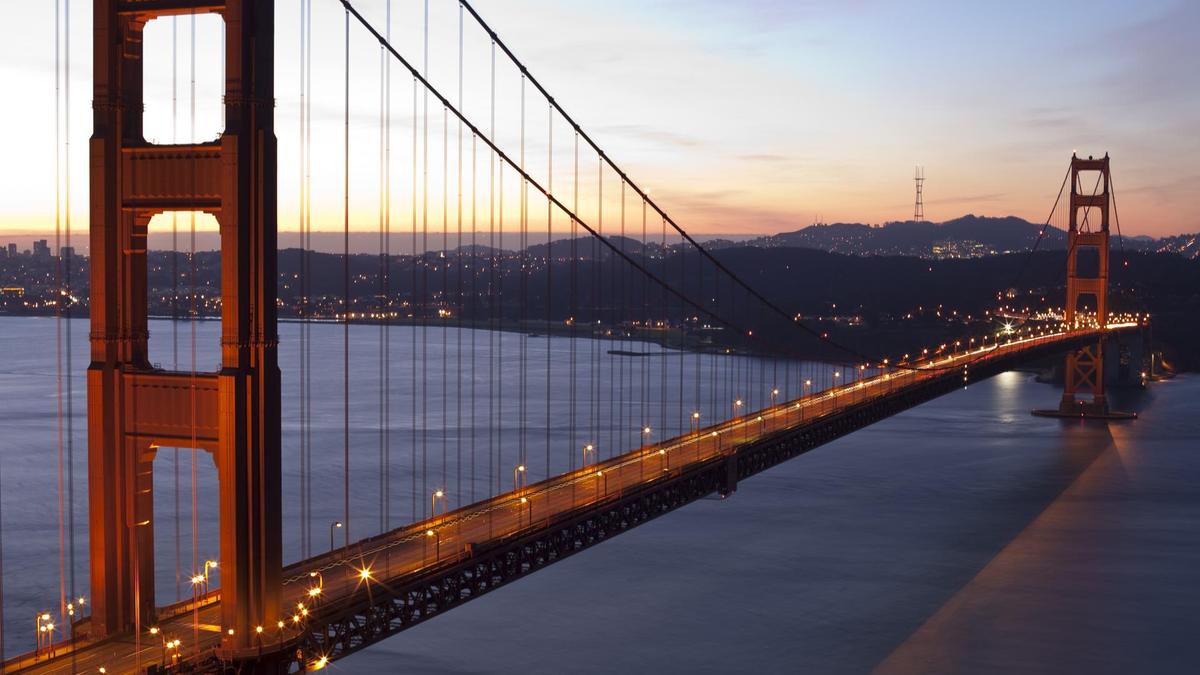Article

Bridges will take us into the future, while walls will keep us trapped where we are
The world is becoming an increasingly divided place, but all around us valuable and courageous connections are still being made. Now we must all endeavour to do the same.
A quick thought experiment. What’s your favourite bridge? Maybe it’s the brightly painted Golden Gate, projecting opportunity through the San Francisco fog. Or the dreamy Rialto, over Venice’s Grand Canal. It could equally be Zaha Hadid’s undulating Sheikh Zayed Bridge, which links Abu Dhabi to the mainland.
Some bridges are places where we can commune with our ancestors. Winston Churchill once showed a young Queen Elizabeth II the River Thames below London’s Tower Bridge, describing it as the “silver thread” that runs through British history. All bridges are places to imagine our descendants. These structures are all about opportunity. They carry trade, ideas, new beginnings, trust. At their height, the world’s great civilisations built bridges.
And your favourite wall? China’s Great Wall is a truly awesome sight. Emperor Hadrian made impressive use of stone and turf to carve Rome’s boundaries across northern Britain. The Walls of Constantinople, meanwhile, have stood guard over the city we now know as Istanbul for 1,500 years. All were, however, built on foundations of fear – the desire and need to keep out enemies. And all eventually failed. Some walls even gain renewed symbolism precisely because they fall. Take Berlin as a recent example.
Ever since the Sumerians built their wall between the Tigris and Euphrates 23 centuries ago to keep out Amorite nomads, walls have signalled the beginning of the end of empires. Who still remembers the 120-mile Red Snake of Gorgon, built 1,600 years ago by the Sasanian Persians as protection against the Huns and stretching from the Caspian Sea to the Elburz Mountains? Even the Great Wall of China – visible from space 24 centuries later – was bypassed by the Mongols and then broken by the Manchus in 1644, heralding the fall of the Ming dynasty. Constantinople’s Theodosian city walls lasted an impressive millennium, repelling even Attila the Hun, until the Ottomans introduced them to the cannon, beginning the fall of the Byzantine Empire.
The surge of solidarity that brought down the Berlin Wall in 1989 heralded the end of Soviet power. A German student named Angela Merkel celebrated. A Russian intelligence operative named Vladimir Putin seethed. And an American tycoon named Donald Trump launched a board game based on his business strategies.
Yet it is wall builders who are taking up most of this century’s oxygen. Many politicians have followed an easy route to popularity by weaponising intolerance. Humans have a tendency to form tribes, offline and now online. It is all too easy to swallow conspiracy theories and wallow in resentment. The internet has amplified the voices of the angry and hateful. It is now harder to find people ready to fight for something than those who only want to rail against everything.
There is no 21st-century challenge to which the answer is: “Build a bigger wall.” Aside from reasons of morality, security or trade, we need to build bridges because our survival depends on innovating across physical and cultural boundaries.
Bridges need to be built because history isn’t over. War is resilient, adaptable and often drives and thrives on innovation. As the discussion at last week’s World Government Summit in Dubai reminded many of us, technology will also create a new challenge for bridge builders – how we live with new forms of intelligence and weather the economic effects of their development. There is no wall that can shield us from those realities.
The good news is that while new barriers are being created by those who seek to divide us, extraordinary bridges are also being built. The Pope’s recent historic visit to Abu Dhabi is just one striking example.
But you don’t need to be a Pope or a head of state to help make the world a better place. Our survival depends on millions of small acts of coexistence; individuals choosing to reach out and connect. Consider the students who have developed a diplobot to counter online hate. The imams and priests producing a curriculum of coexistence. The tech company connecting refugees to those who want to help them.
At an event on reconciliation I attended in Beirut, I met two such bridge builders. One spoke eloquently about losing her father in a terrorist attack in Northern Ireland. “I’m here to ask people to work harder to live together,” she said. Then I asked her companion for his story. “I was the bomber. I’m with her,” he replied.
If it is possible for two such people to conquer their fears, prejudices and anger, then we can all try. Take on that argument, form a relationship with someone from the other side, build that bridge. These are all acts of courage.
Bridges take us somewhere. Walls confine us.
My favourite bridge is the Forth Bridge in the east of Scotland. Famously, once workmen finish painting this massive structure, they have to start again at the other end. For me, it has become a metaphor for tasks that require patience, determination and resolve. Just like those that stand before us now.
Photo credit and description: Bridges, such as San Francisco's Golden Gate, are all about opportunity and innovation. Getty Images
Please click here to read the article in full.

